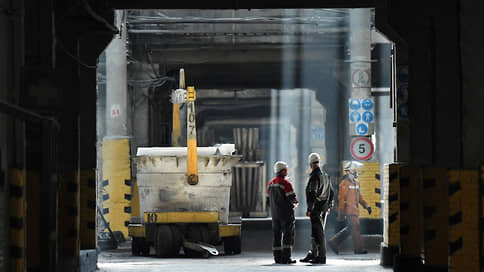Aluminum prices have become closer to buyers
[ad_1]

Instead of traditional London Metal Exchange (LME) quotes, Rusal (MOEX: RUAL) began using prices from the Shanghai Futures Exchange when working with Chinese clients. This comes amid significant growth in aluminum sales to China and other Asian countries. Switching to local quotes when there are significant volumes of trade with Asian buyers is a common practice, LME indicators are more traditional, but the use of Shanghai and London pricing systems, depending on the situation, can expand the seller’s room for maneuver.
Rusal disclosed in its annual reports for 2023 under IFRS that it uses aluminum quotes not only from the traditional LME, but also from the Shanghai Futures Exchange. The Chinese exchange was not mentioned in previous company reports. The press service of the largest aluminum producer outside of China told Kommersant that pricing in the Chinese market is tied mainly to the prices of the Shanghai Futures Exchange. “The price in the contract depends on the quotes at the time the transactions are concluded,” explains Rusal. “Pricing in markets outside China is still tied to the LME.” Rusal added that, like other Russian companies, it was forced to redirect sales to the east due to restrictions in premium Western markets. In 2023, they explained, the company increased the share of Asia in its revenue structure.
Rusal, as follows from the reports, is increasing supplies to Asia and China. The company’s revenue in 2023 decreased by 13%, to $12.2 billion, adjusted EBITDA decreased by 61.2%, to $786 million. Net profit fell by 84.3%, to $282 million. Revenue in Asia increased by 25%, to $4.7 billion, while in Europe it decreased by 32%, to $3.4 billion. Revenue from American consumers fell by 83%, to $176 million. Revenue from China increased 2.5 times, to $2.8 billion.
Companies trading with China are gradually switching to listings on local exchanges. In 2022, Reuters reported that Chinese nickel buyers had asked producers to switch from LME contracts to Shanghai Futures Exchange contracts to price their 2023 deliveries. According to the agency, Norilsk Nickel supplied part of the nickel at Shanghai prices and in yuan. Norilsk Nickel told Kommersant that they use both quotes depending on the wishes of clients. “Arbitrage is volatile, it can go both ways,” the company explained. “The very fact of linking a contract to one of the sites does not mean lower or higher prices, since they can be equalized through a discount or premium to the benchmark.”
The situation with trade in Russian metals on the LME has been in focus since the outbreak of hostilities in Ukraine. In December 2023, the UK banned companies and citizens of the country from trading Russian metal, including aluminum. However, the regulator issued a license allowing the exchange and exchange participants to purchase warrants for metals (derivatives: certificates of acceptance of metal for storage). In addition, reserves of Russian aluminum are accumulating in the warehouses of the exchange (see “Kommersant” dated January 11).
Aluminum trading volumes on the Shanghai Exchange have already exceeded those in London by 40% (we are talking about virtual volumes), comments Sergei Grishunin, managing director of the NRA rating service. Prices on exchanges are correlated, but there is still a price differential; on average it reaches $20–30 per ton, although in certain periods it reaches $150 per ton. Typically, the analyst says, the price in Asia is higher than London, but in reality this is compensated by premiums for the physical delivery of metal, which buyers of real metal are forced to pay to remove it from the exchange warehouse.
The price on the Shanghai Exchange is still considered a little less volatile, in addition, it is more convenient for trading physical metal, adds Mr. Grishunin. However, he notes, historically, most contracts are tied to London, which introduces an element of market risk in the work on Chinese stock exchange quotes, and therefore creates certain inconveniences for the company’s risk management.
[ad_2]
Source link





